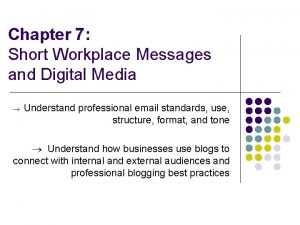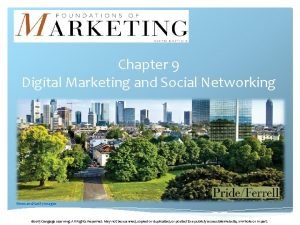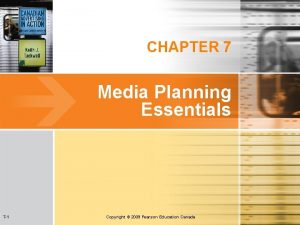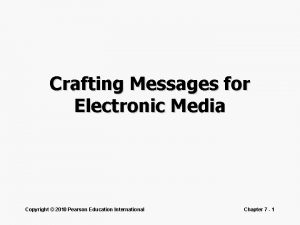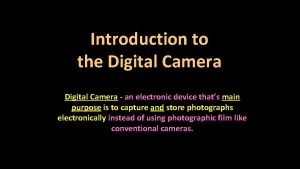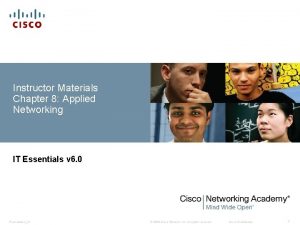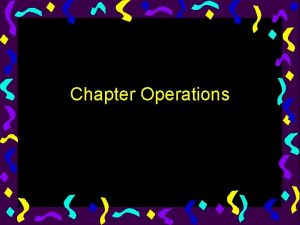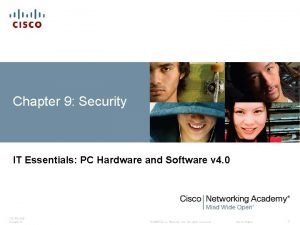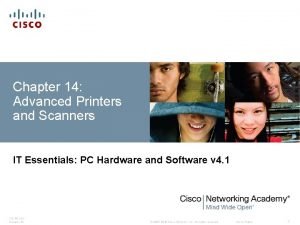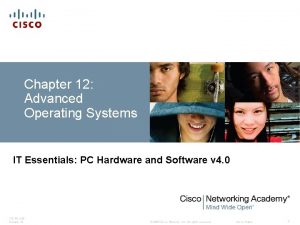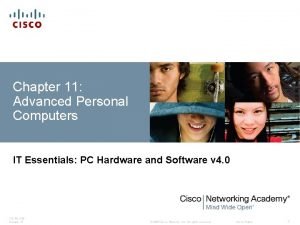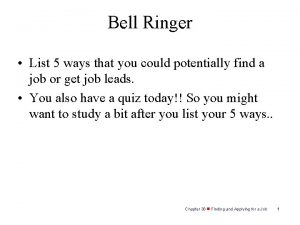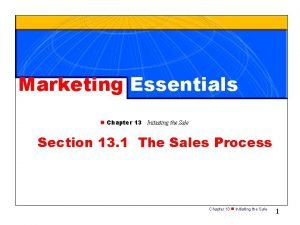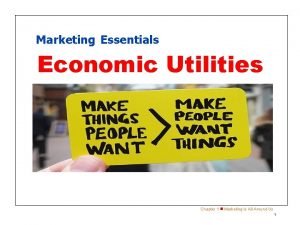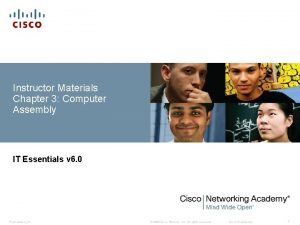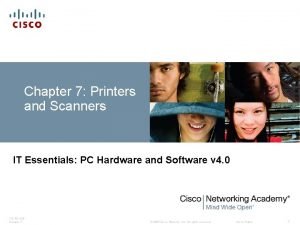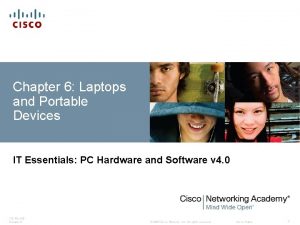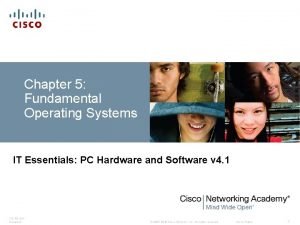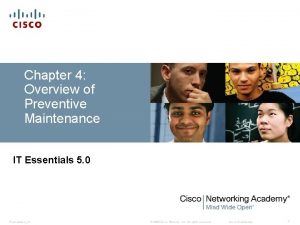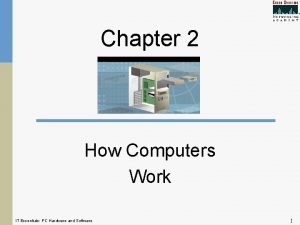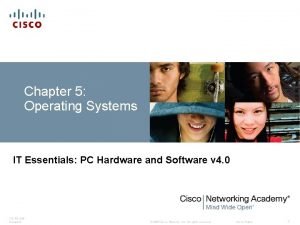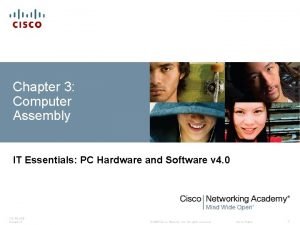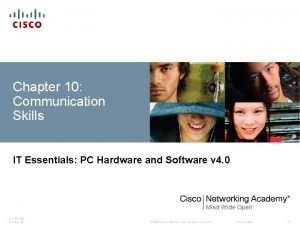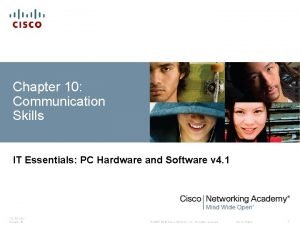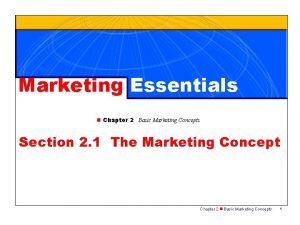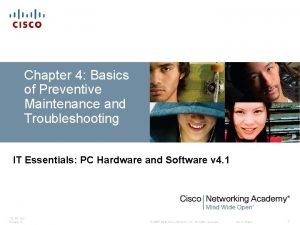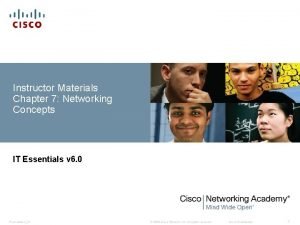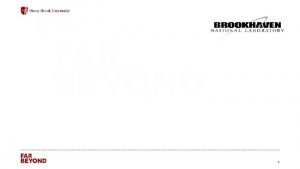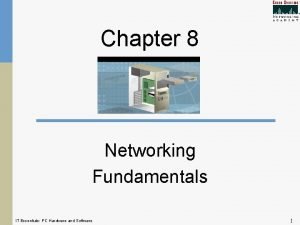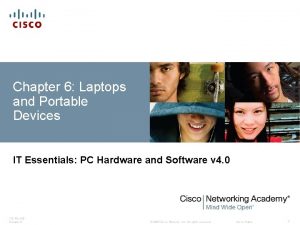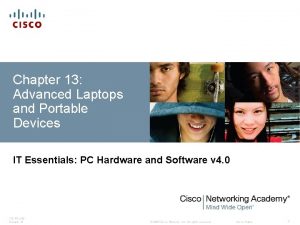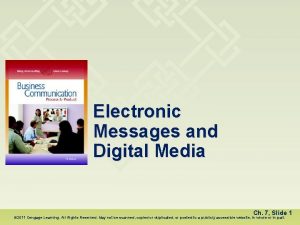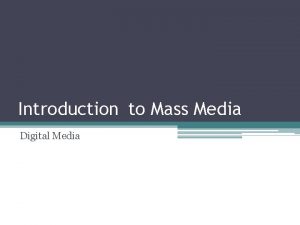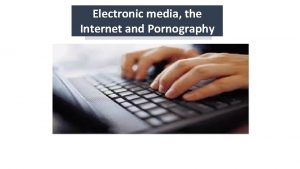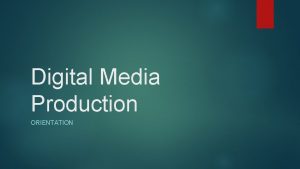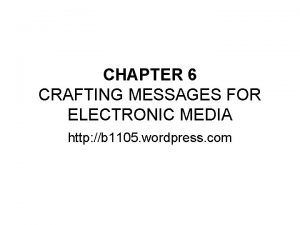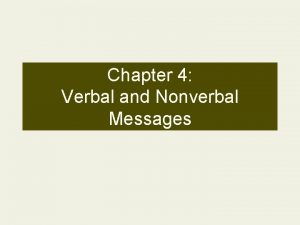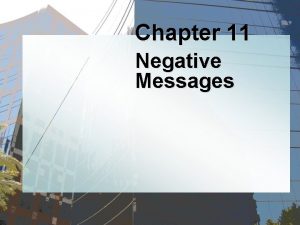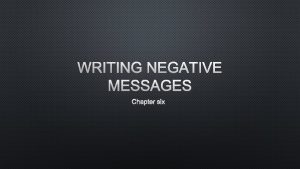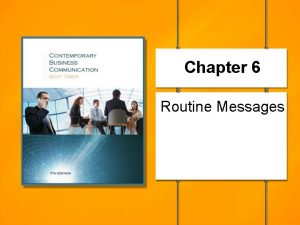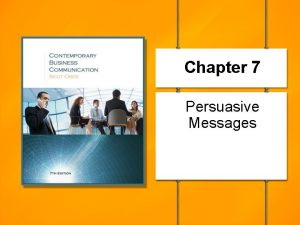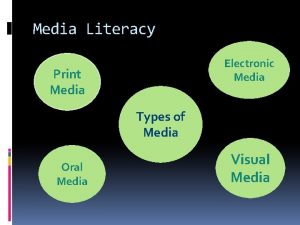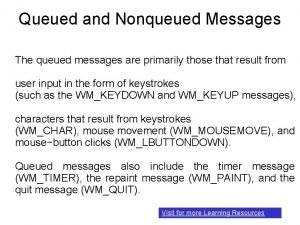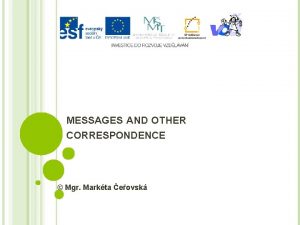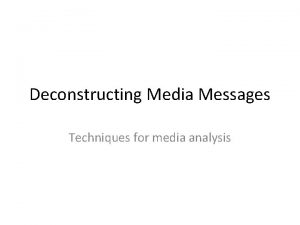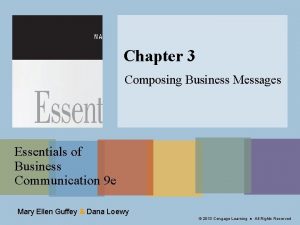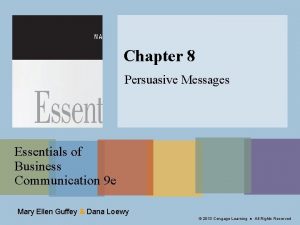Chapter 5 Electronic Messages and Digital Media Essentials









































- Slides: 41

Chapter 5 Electronic Messages and Digital Media Essentials of Business Communication 9 e Mary Ellen Guffey & Dana Loewy © 2013 Cengage Learning ● All Rights Reserved

Flow of Information in Organizations § Two prevailing technological trends today: Mobile communication Cloud computing © 2013 Cengage Learning ● All Rights Reserved § Today’s workforce must stay connected at all times. § “Communications is EVERYTHING; “EVERYTHING is Communications” Mary Ellen Guffey & Dana Loewy, Essentials of Business Communication, 9 th Edition Chapter 5, Slide 2

Flow of Information in Organizations Skills expected of business communicators: © 2013 Cengage Learning ● All Rights Reserved § Transmit information electronically § Use communication technology, including e-mail, instant messaging, text messaging, and corporate blogs § Understand how businesses use podcasts, wikis, and social media § Prepare effective digital messages Mary Ellen Guffey & Dana Loewy, Essentials of Business Communication, 9 th Edition Chapter 5, Slide 3

How much data is on the internet ? © 2013 Cengage Learning ● All Rights Reserved Google Data Center in Georgia Largest Number – “yotta” – 1 + 24 zero’s

Written Messages at Work Paper-based messages © 2013 Cengage Learning ● All Rights Reserved • • • Business letters Interoffice memos Reports Proposals Manuals Brochures Electronic messages • • E-mail Instant messaging Text messaging Podcasts Blogs Wikis Social media Mary Ellen Guffey & Dana Loewy, Essentials of Business Communication, 9 th Edition Chapter 5, Slide 5

WRITTEN MESSAGES § Carry more weight § Taken more seriously in certain situations § Can be more attractively formatted © 2013 Cengage Learning ● All Rights Reserved Advantages ELECTRONIC MESSAGES § Delivered instantaneously § Promote faster feedback § Considered a standard form of communication within organizations Mary Ellen Guffey & Dana Loewy, Essentials of Business Communication, 9 th Edition Chapter 5, Slide 6

Components of E-Mail Messages and Memos © 2013 Cengage Learning ● All Rights Reserved Subject Line Opening Body Closing Mary Ellen Guffey & Dana Loewy, Essentials of Business Communication, 9 th Edition Chapter 5, Slide 7

Informational E-Mails and Memos Writing Plan © 2013 Cengage Learning ● All Rights Reserved Subject Line § Summarize the main idea § Avoid meaningless one-word subject lines such as Help or Urgent. § Type in upper- and lowercase letters— never in all upper- or lowercase. § Do not write as a complete sentence. § NEVER leave the subject line blank. Mary Ellen Guffey & Dana Loewy, Essentials of Business Communication, 9 th Edition Chapter 5, Slide 8

Informational E-Mails and Memos Writing Plan Subject Line © 2013 Cengage Learning ● All Rights Reserved Instead of these: Urgent! Try these: Expense Form Due by Friday at 5 p. m. we will meet this week Task Force Meeting Thursday, May 28 Mary Ellen Guffey & Dana Loewy, Essentials of Business Communication, 9 th Edition Chapter 5, Slide 9

Informational E-Mails and Memos Writing Plan Opening Frontload (direct): reveal main idea immediately in expanded form. © 2013 Cengage Learning ● All Rights Reserved Instead of this: Several employees have requested we set up a vanpool. Try this: We will meet this Friday at 2 p. m. to discuss a possible company vanpool. Mary Ellen Guffey & Dana Loewy, Essentials of Business Communication, 9 th Edition Chapter 5, Slide 10

Informational E-Mails and Memos Writing Plan © 2013 Cengage Learning ● All Rights Reserved Body § Explain and justify the opening. § Organize information and explanations logically. § Cover just one topic. § Use headings and numbered and bulleted lists to add high “skim value. ” Mary Ellen Guffey & Dana Loewy, Essentials of Business Communication, 9 th Edition Chapter 5, Slide 11

Informational E-Mails and Memos Writing Plan Closing § End with one or more of the following: © 2013 Cengage Learning ● All Rights Reserved • Action information, dates, or deadlines • Summary of the message • Closing thought § Avoid overused expressions such as Please don’t hesitate to let me know if I may be of further assistance. Mary Ellen Guffey & Dana Loewy, Essentials of Business Communication, 9 th Edition Chapter 5, Slide 12

Informational E-Mails and Memos Writing Plan Closing © 2013 Cengage Learning ● All Rights Reserved Instead of this: Thank you for your cooperation. Try this: Please let me know your answer by Monday, June 2. Mary Ellen Guffey & Dana Loewy, Essentials of Business Communication, 9 th Edition Chapter 5, Slide 13

Hints for Formatting E-Mail Messages Salutation Options © 2013 Cengage Learning ● All Rights Reserved § No salutation § Ann, Dear Ann: , Hi, or Good morning! § Include name in first line “Thanks, Ann, for your help. . . ” Mary Ellen Guffey & Dana Loewy, Essentials of Business Communication, 9 th Edition Chapter 5, Slide 14

Formatting E-Mail Messages Body © 2013 Cengage Learning ● All Rights Reserved § Use standard uppercase and lowercase letters. § Cover just one topic. § Try to keep total message under three screens in length. § Double-space between paragraphs. Mary Ellen Guffey & Dana Loewy, Essentials of Business Communication, 9 th Edition Chapter 5, Slide 15

Formatting E-Mail Messages Closing © 2013 Cengage Learning ● All Rights Reserved § Consider a complimentary closing such as Warm regards or Cheers. § Always type your name at the bottom. § Include full contact identification when needed– especially for messages to outsiders. Mary Ellen Guffey & Dana Loewy, Essentials of Business Communication, 9 th Edition Chapter 5, Slide 16

Professional E-Mail Messages Content, Tone, and Correctness © 2013 Cengage Learning ● All Rights Reserved § Be concise. § Don’t send anything you wouldn’t want published. § Don’t use e-mail to avoid contact. § Care about correctness and tone. § Resist humor and sarcasm. Mary Ellen Guffey & Dana Loewy, Essentials of Business Communication, 9 th Edition Chapter 5, Slide 17

Professional E-Mail Messages Netiquette © 2013 Cengage Learning ● All Rights Reserved § Never send blanket copies or “spam. ” § Use capital letters only for emphasis or for titles. § Don’t forward without permission § Beware of long threads. § Use of Blind Carbon Copy Mary Ellen Guffey & Dana Loewy, Essentials of Business Communication, 9 th Edition Chapter 5, Slide 18

Professional E-Mail Messages Reading and Replying © 2013 Cengage Learning ● All Rights Reserved § § Scan all messages before replying. Print only when necessary. Acknowledge receipt. Don’t automatically return the sender’s message. § Revise the subject line if the topic changes. § Provide a clear, complete first sentence. § Never respond when you are angry. Mary Ellen Guffey & Dana Loewy, Essentials of Business Communication, 9 th Edition Chapter 5, Slide 19

Professional E-Mail Messages Personal Use © 2013 Cengage Learning ● All Rights Reserved § Don’t use company computers for personal matters unless allowed by your organization. § Assume that all e-mail is monitored. Mary Ellen Guffey & Dana Loewy, Essentials of Business Communication, 9 th Edition Chapter 5, Slide 20

Professional E-Mail Messages Other Smart Practices © 2013 Cengage Learning ● All Rights Reserved § Use design to improve readability of longer messages. § Consider cultural differences. § Double-check before hitting the Send button. Mary Ellen Guffey & Dana Loewy, Essentials of Business Communication, 9 th Edition Chapter 5, Slide 21

© 2013 Cengage Learning ● All Rights Reserved Communications Workshop Page 139

Instant Messaging and Texting Best Practices © 2013 Cengage Learning ● All Rights Reserved § Learn about your organization’s IM policies. Are you allowed to use IM? § Don’t text or IM while driving. § Make yourself unavailable when you need to complete a project or meet a deadline. Mary Ellen Guffey & Dana Loewy, Essentials of Business Communication, 9 th Edition Chapter 5, Slide 23

Instant Messaging and Texting Best Practices © 2013 Cengage Learning ● All Rights Reserved § Organize your contact list to separate business contacts from family and friends. § Keep your messages simple and to the point. § Don’t use IM or text to send confidential or sensitive information. Mary Ellen Guffey & Dana Loewy, Essentials of Business Communication, 9 th Edition Chapter 5, Slide 24

Instant Messaging and Texting Best Practices © 2013 Cengage Learning ● All Rights Reserved § Be aware that instant messages can be saved. § If personal messaging is allowed, keep it to a minimum. § Show patience by not blasting multiple messages to coworkers if response is not immediate. Mary Ellen Guffey & Dana Loewy, Essentials of Business Communication, 9 th Edition Chapter 5, Slide 25

Instant Messaging and Texting Best Practices © 2013 Cengage Learning ● All Rights Reserved § Keep your presence status up-to-date. § Beware of jargon, slang, and abbreviations. § Respect your receivers by using proper grammar, spelling, and proofreading. Mary Ellen Guffey & Dana Loewy, Essentials of Business Communication, 9 th Edition Chapter 5, Slide 26

Business Podcast Basics © 2013 Cengage Learning ● All Rights Reserved § May consist of audio and video files. § Can be downloaded or streamed on a Web site. § May be used by media outlets, in education, and by organizations for such activities as training and marketing. Mary Ellen Guffey & Dana Loewy, Essentials of Business Communication, 9 th Edition Chapter 5, Slide 27

Creating Business Podcasts © 2013 Cengage Learning ● All Rights Reserved § § Download software. Obtain hardware. Organize the message. Choose an extemporaneous or scripted delivery. § Prepare and practice. § Publish and distribute your message. Mary Ellen Guffey & Dana Loewy, Essentials of Business Communication, 9 th Edition Chapter 5, Slide 28

Professional Blogs and Twitter © 2013 Cengage Learning ● All Rights Reserved § Blogs: Web sites with journal entries written by one person § Feedback left by readers § Help companies interact with customers § Help keep employees informed § Twitter: Microblogging service Mary Ellen Guffey & Dana Loewy, Essentials of Business Communication, 9 th Edition Chapter 5, Slide 29

Professional Blogs and Twitter How Businesses Use Blogs and Twitter © 2013 Cengage Learning ● All Rights Reserved § For public relations, customer relations, and crisis communication § For market research § To create online communities § For internal communication and recruiting Mary Ellen Guffey & Dana Loewy, Essentials of Business Communication, 9 th Edition Chapter 5, Slide 30

Professional Blogs and Twitter Tips for Creating a Professional Blog © 2013 Cengage Learning ● All Rights Reserved § § Identify your audience. Find a home for your blog. Craft your message. Make “blogrolling” (linking to related sites or blogs) work for you. § Attract search tools by choosing the right keywords. Mary Ellen Guffey & Dana Loewy, Essentials of Business Communication, 9 th Edition Chapter 5, Slide 31

Professional Blogs and Twitter More Tips for Creating a Professional Blog © 2013 Cengage Learning ● All Rights Reserved § Blog often. § Monitor the traffic to your site. § Seek permission from your employer. § Stay away from inappropriate topics. Mary Ellen Guffey & Dana Loewy, Essentials of Business Communication, 9 th Edition Chapter 5, Slide 32

Wiki Basics © 2013 Cengage Learning ● All Rights Reserved § Wiki: A Web site with collaborative software that allows users to create documents that can be updated and edited § Used for collaborating across time zones and distances Mary Ellen Guffey & Dana Loewy, Essentials of Business Communication, 9 th Edition Chapter 5, Slide 33

Wikis and Collaboration How Businesses Use Wikis © 2013 Cengage Learning ● All Rights Reserved § To share information between headquarters and satellite offices § To create a knowledge base § To facilitate meetings § To create a highly interactive environment for projects § To document projects Mary Ellen Guffey & Dana Loewy, Essentials of Business Communication, 9 th Edition Chapter 5, Slide 34

Wikis and Collaboration How To Be a Valuable Wiki Contributor © 2013 Cengage Learning ● All Rights Reserved § Be polite and show respect. § Avoid improper or ambiguous language. § Don’t attack or harshly criticize another contributor. § Pay attention to grammar and spelling. § Verify your facts. § Give credit where credit is due. Mary Ellen Guffey & Dana Loewy, Essentials of Business Communication, 9 th Edition Chapter 5, Slide 35

Social/Professional Networking The Basics © 2013 Cengage Learning ● All Rights Reserved § Businesses connect with customers and employees, share company news, and exchange ideas on social networking sites such as Facebook and Twitter. § Recruiters looks for talent on professional networking sites such as Linked. In. Mary Ellen Guffey & Dana Loewy, Essentials of Business Communication, 9 th Edition Chapter 5, Slide 36

Social/Professional Networking How Businesses Use Social Networks © 2013 Cengage Learning ● All Rights Reserved § For brainstorming and teamwork § To boost brand image § To provide a forum for collaboration § To create buzz § To get feedback from customers Mary Ellen Guffey & Dana Loewy, Essentials of Business Communication, 9 th Edition Chapter 5, Slide 37

Social/Professional Networking How To Use Social Network Sites and Keep Your Job © 2013 Cengage Learning ● All Rights Reserved § Exercise caution and think before you post. § Don’t share sensitive or inappropriate information or photos. § Be careful when blocking colleagues or turning down friend invitations. Mary Ellen Guffey & Dana Loewy, Essentials of Business Communication, 9 th Edition Chapter 5, Slide 38

Social/Professional Networking How To Harness the Potential of Professional Networking Sites © 2013 Cengage Learning ● All Rights Reserved § Use as a valuable source for referrals and recommendations. § Keep your profile “clean. ” § Highlight awards, professional goals, and accomplishments. Mary Ellen Guffey & Dana Loewy, Essentials of Business Communication, 9 th Edition Chapter 5, Slide 39

© 2013 Cengage Learning ● All Rights Reserved “More companies are discovering that an über-connected workplace is not just about implementing a new set of tools—it is also about embracing a cultural shift to create an open environment where employees are encouraged to share, innovate and collaborate virtually. ” -- Karie Willyerd and Jeanne C. Meister Harvard. Business. org Mary Ellen Guffey & Dana Loewy, Essentials of Business Communication, 9 th Edition Chapter 5, Slide 40

END Essentials of Business Communication 9 e Mary Ellen Guffey & Dana Loewy © 2013 Cengage Learning ● All Rights Reserved
 Compositional mode for digital media
Compositional mode for digital media Crafting messages for electronic media
Crafting messages for electronic media Short workplace messages and digital media
Short workplace messages and digital media Essentials of social media marketing chapter 9 quiz
Essentials of social media marketing chapter 9 quiz Electronic field production
Electronic field production Scrip exchange
Scrip exchange Media planning essentials
Media planning essentials Crafting media messages
Crafting media messages A digital camera is an electronic device
A digital camera is an electronic device Definition of e payment system
Definition of e payment system It essential chapter 8
It essential chapter 8 What are the essentials of a successful ffa chapter
What are the essentials of a successful ffa chapter It essential chapter 9
It essential chapter 9 Ite chapter 14
Ite chapter 14 Chapter 12 quiz it essentials
Chapter 12 quiz it essentials It essentials chapter 11
It essentials chapter 11 Business essentials 12th edition
Business essentials 12th edition Marketing essentials chapter 38
Marketing essentials chapter 38 Marketing essentials chapter 13
Marketing essentials chapter 13 Form utility
Form utility It essentials chapter 5
It essentials chapter 5 It essentials chapter 3
It essentials chapter 3 It essentials chapter 11
It essentials chapter 11 It essentials chapter 7
It essentials chapter 7 It essentials chapter 6
It essentials chapter 6 It essentials chapter 5
It essentials chapter 5 It essentials chapter 4
It essentials chapter 4 Math is the foundation of the kitchen and the back office
Math is the foundation of the kitchen and the back office It essentials chapter 2
It essentials chapter 2 It essentials chapter 5
It essentials chapter 5 Pata cable
Pata cable It essentials chapter 10
It essentials chapter 10 It essentials chapter 10
It essentials chapter 10 Ad altare dei answers chapter 1
Ad altare dei answers chapter 1 Marketing essentials chapter 2
Marketing essentials chapter 2 Preventive maintenance and troubleshooting
Preventive maintenance and troubleshooting It essentials chapter 7
It essentials chapter 7 What are the ten essentials of a successful ffa chapter
What are the ten essentials of a successful ffa chapter It essentials chapter 8
It essentials chapter 8 It essentials chapter 6
It essentials chapter 6 Chapter 5 kitchen essentials 2
Chapter 5 kitchen essentials 2 It essentials chapter 13
It essentials chapter 13


